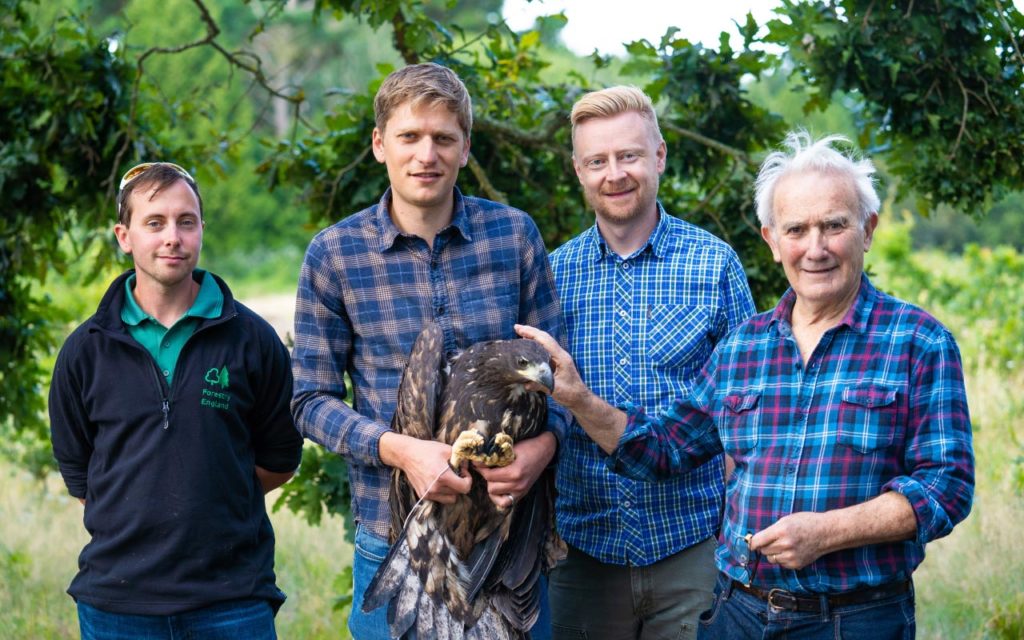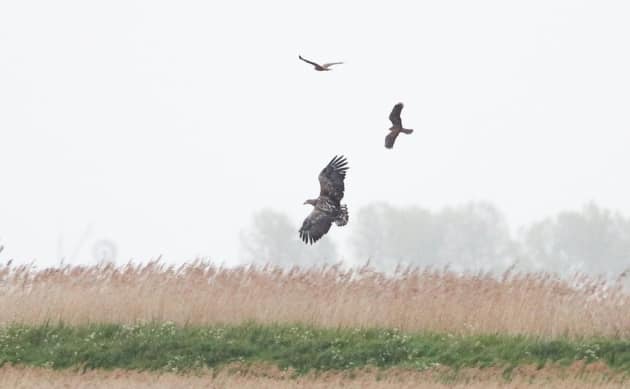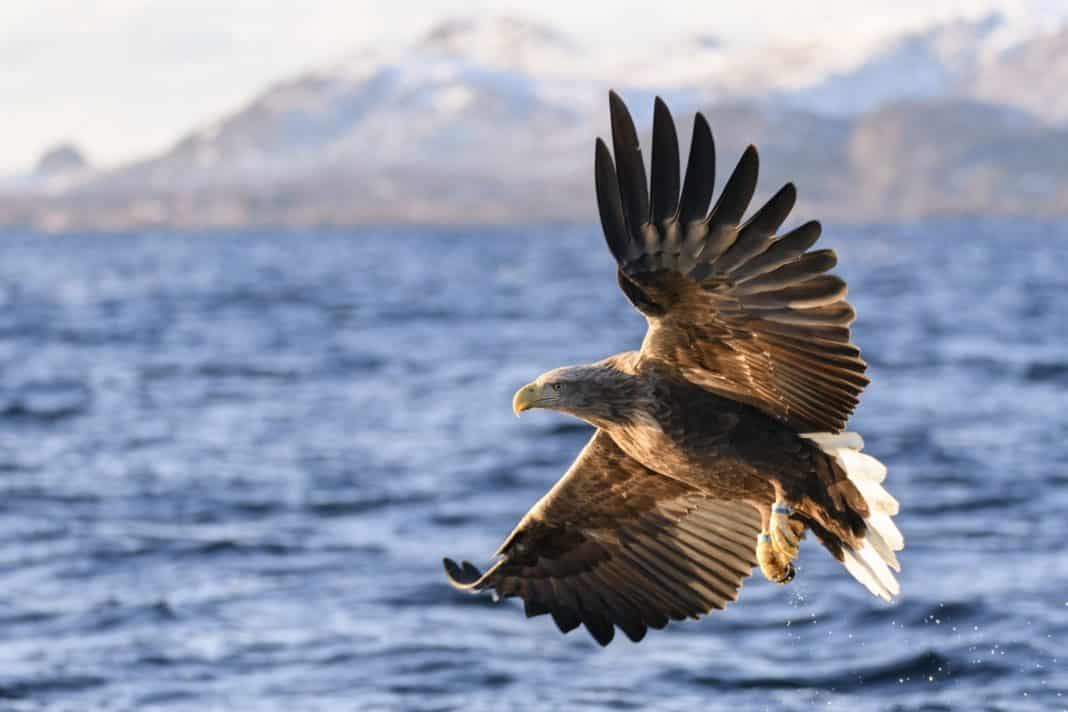After going extinct in the 18th century, the White-tailed eagle is making a return to England
The Sea eagle, also known as the white-tailed eagle, became extinct during the 18th century in the UK but has now been successfully reintroduced to the west coast of Scotland and on the Isle of Wight following conservation efforts last year.
They are a protected species in the UK under the Wildlife and Countryside Act of 1981 and have been classified as red under the Birds of Conservation Concern list, as of 2015.
Four juvenile white-tailed eagles were reintroduced on the Isle of Wight and conservationists from the Roy Dennis Wildlife Foundation, as well as Forestry England have been tracking the birds via GPS.
The eagles were relatively dormant throughout winter, and tracking data reveals some of the birds have flown across several English counties, including Norfolk between the 4th and 6th of April for one of the eagles, named G324.
The Roy Dennis Wildlife Foundation documented her flight path:
“She was flying north-east through Cambridgeshire at an altitude of 720 metres and that night she roosted in arable farmland just north of Lakenheath Fen RSPB reserve in south-west Norfolk after a flight of 245km (152 miles).”

“Next day she continued north-east for another 64km (40 miles) and reached an area of private land close to Cley on the north Norfolk coast.”
“She remained in that area until the morning of April 6 but set of south soon after 1pm before roosting in a small wood near the village of Peasenhall in Suffolk, having flown 80km (50 miles) during the course of the day.”
White-tailed eagles can live for up to 25 years, and are the UK’s largest bird of prey, having an average wingspan of around 2.2 metres.
Adult Sea eagles can be spotted by their recognisable white, wedge-shaped tail and pale head with yellow bill; they are most likely to be spotted close to the coast due to their diet largely consisting of fish.
Despite fish being a large component in the diet of these eagles, they are also known to eat some small mammals and birds.
Sightings of Sea eagles in Norfolk are extremely rare, but not unheard of, photographer James Lowen caught one on camera in flight in 2017, at the Buckenham Marshes Nature Reserve.

Credit: James Lowen
Although the eagles have returned to England through human intervention in the from of conservation efforts, but around the world there are being sightings of more animals due to less human activity during the COVID-19 pandemic, including suspected wolf sightings in Northern France, that would be the first for a century.
The Roy Dennis Wildlife Foundation is now requesting that you report any sightings to the foundation on their website, so perhaps if you go on any walks to get out of the house during the current lockdown, you may want to keep your eyes on the skies to see if you can see any of these marvellous eagles.
